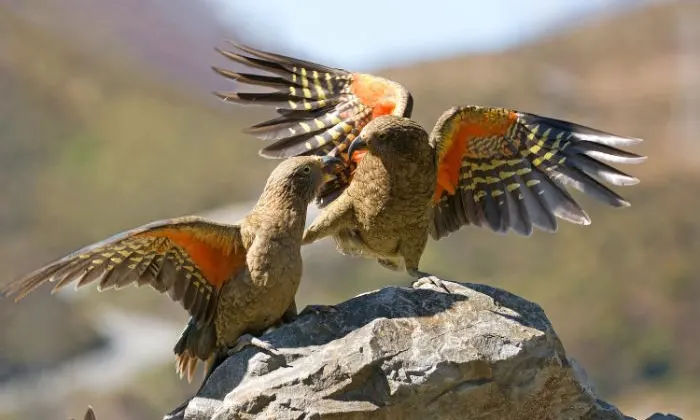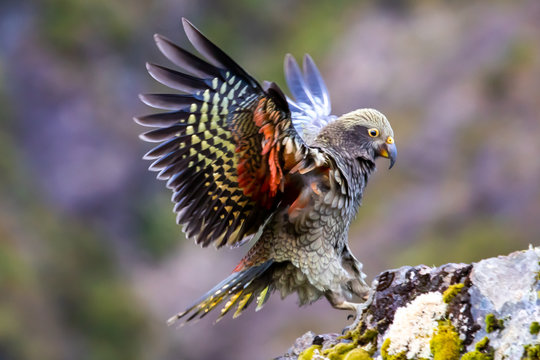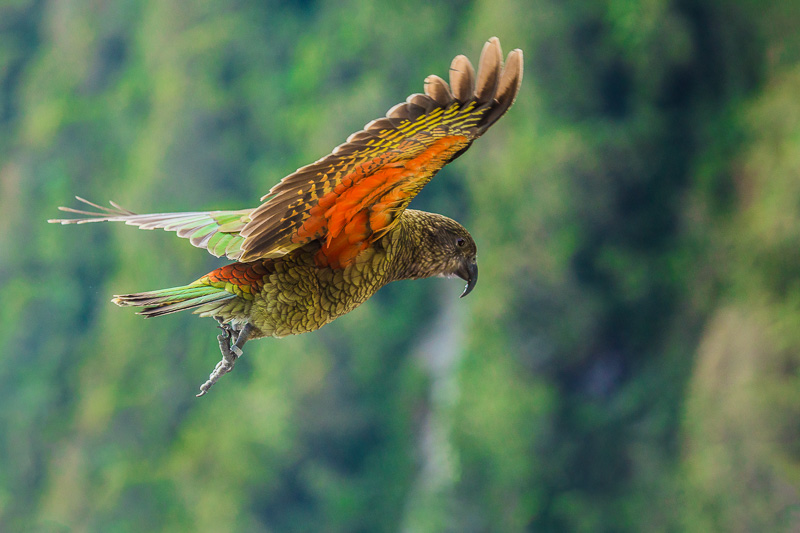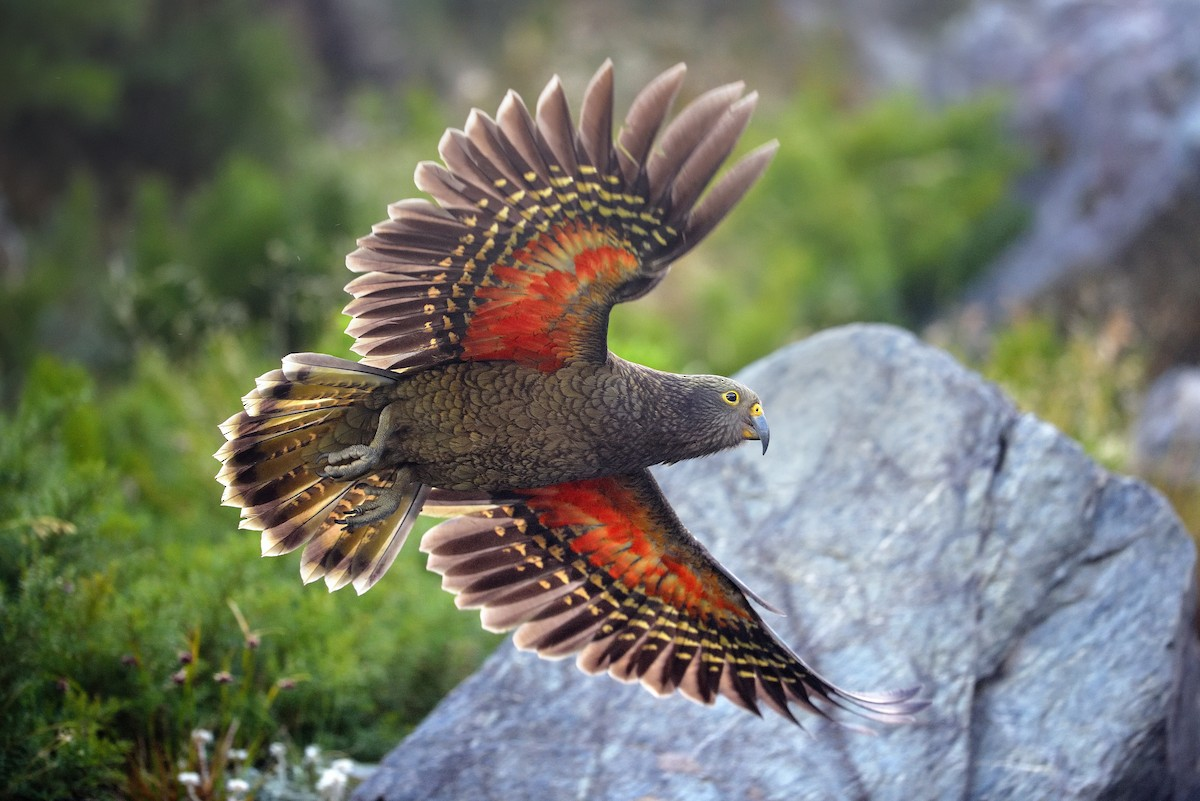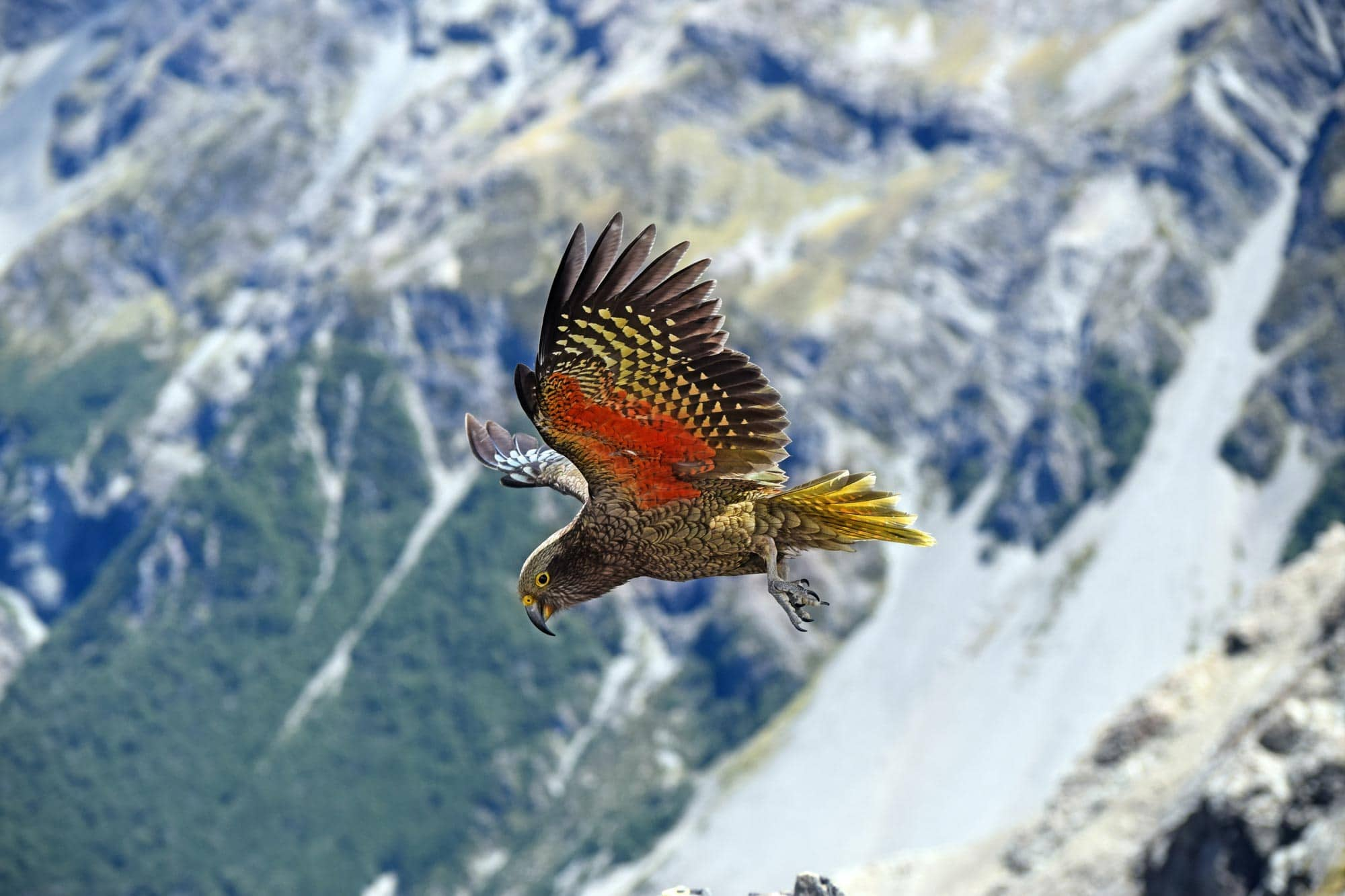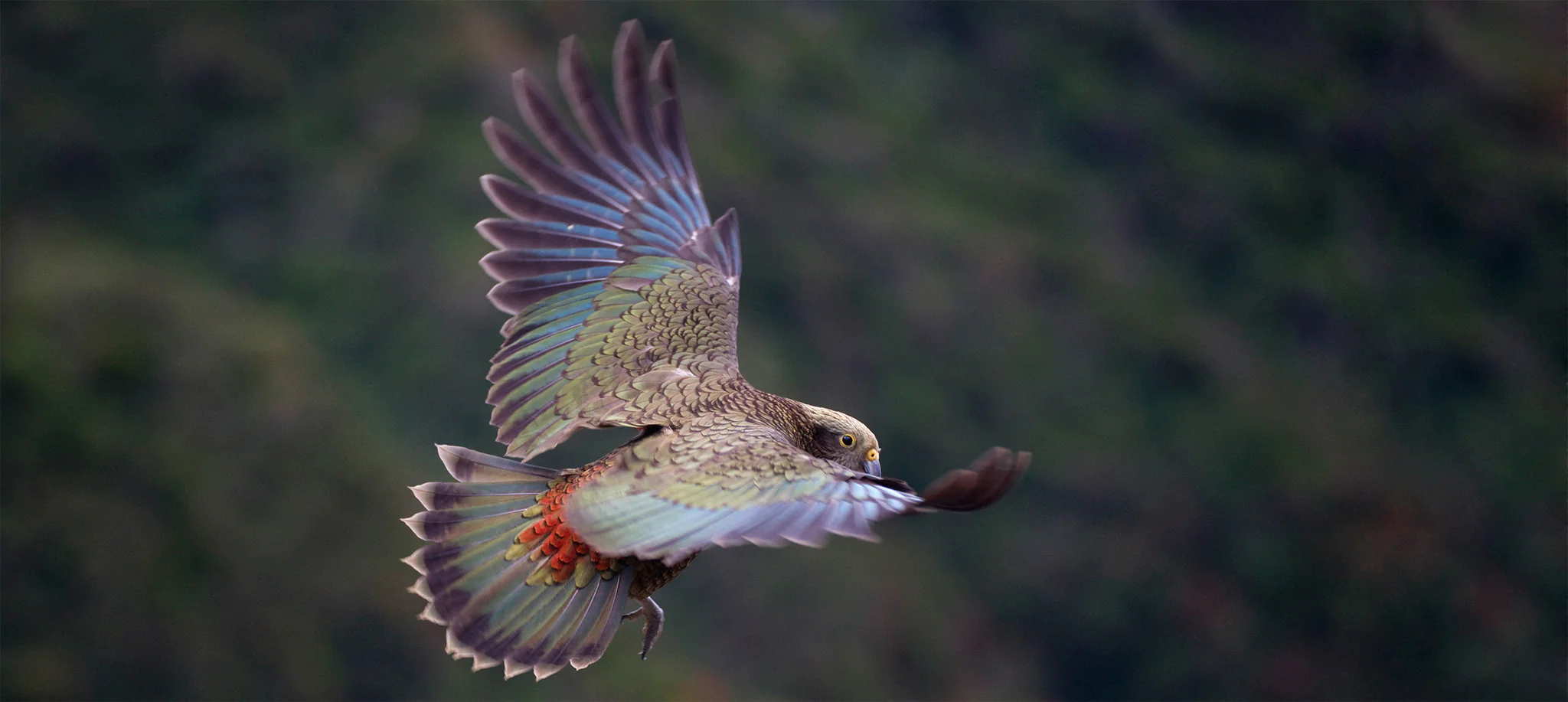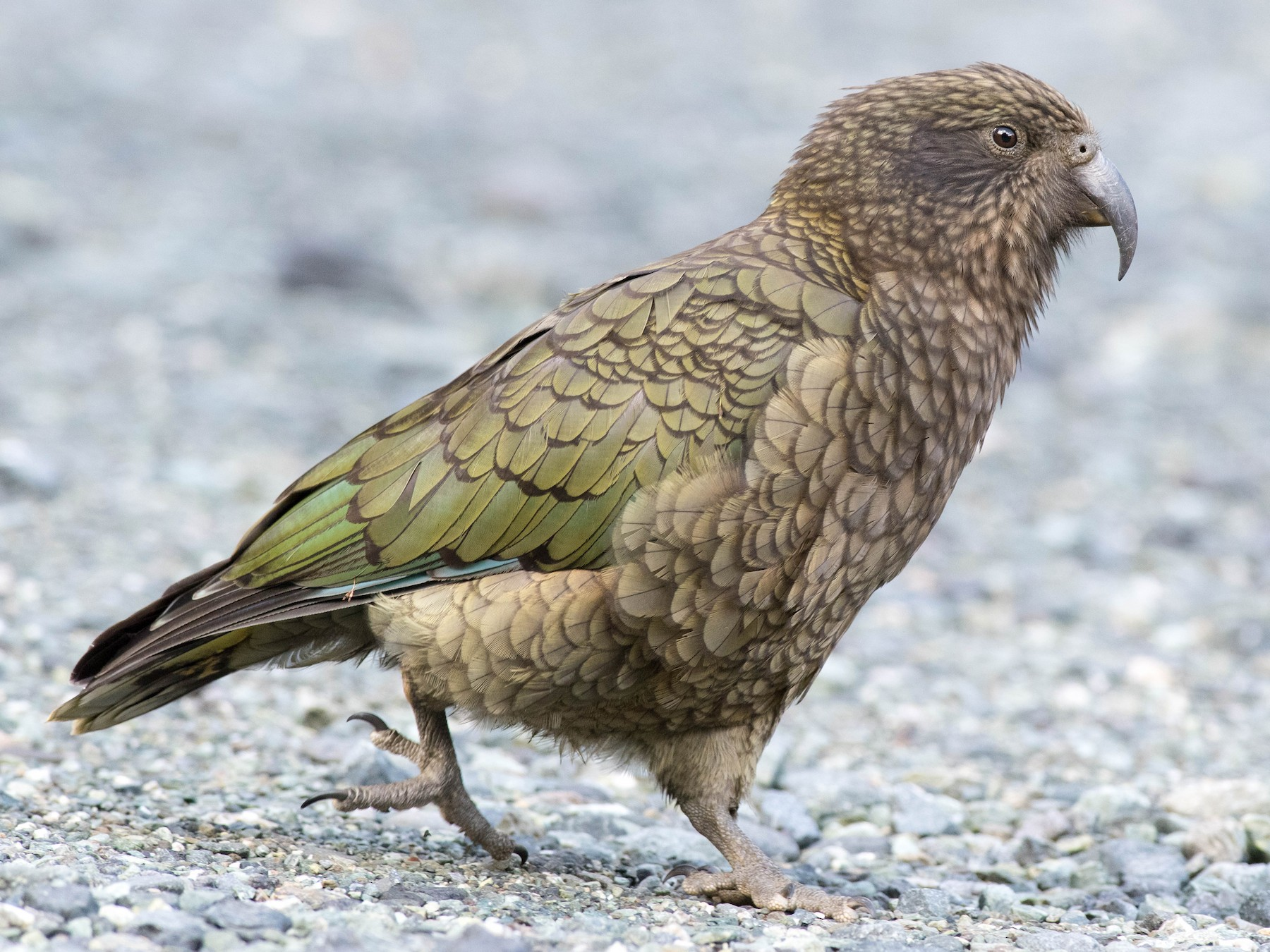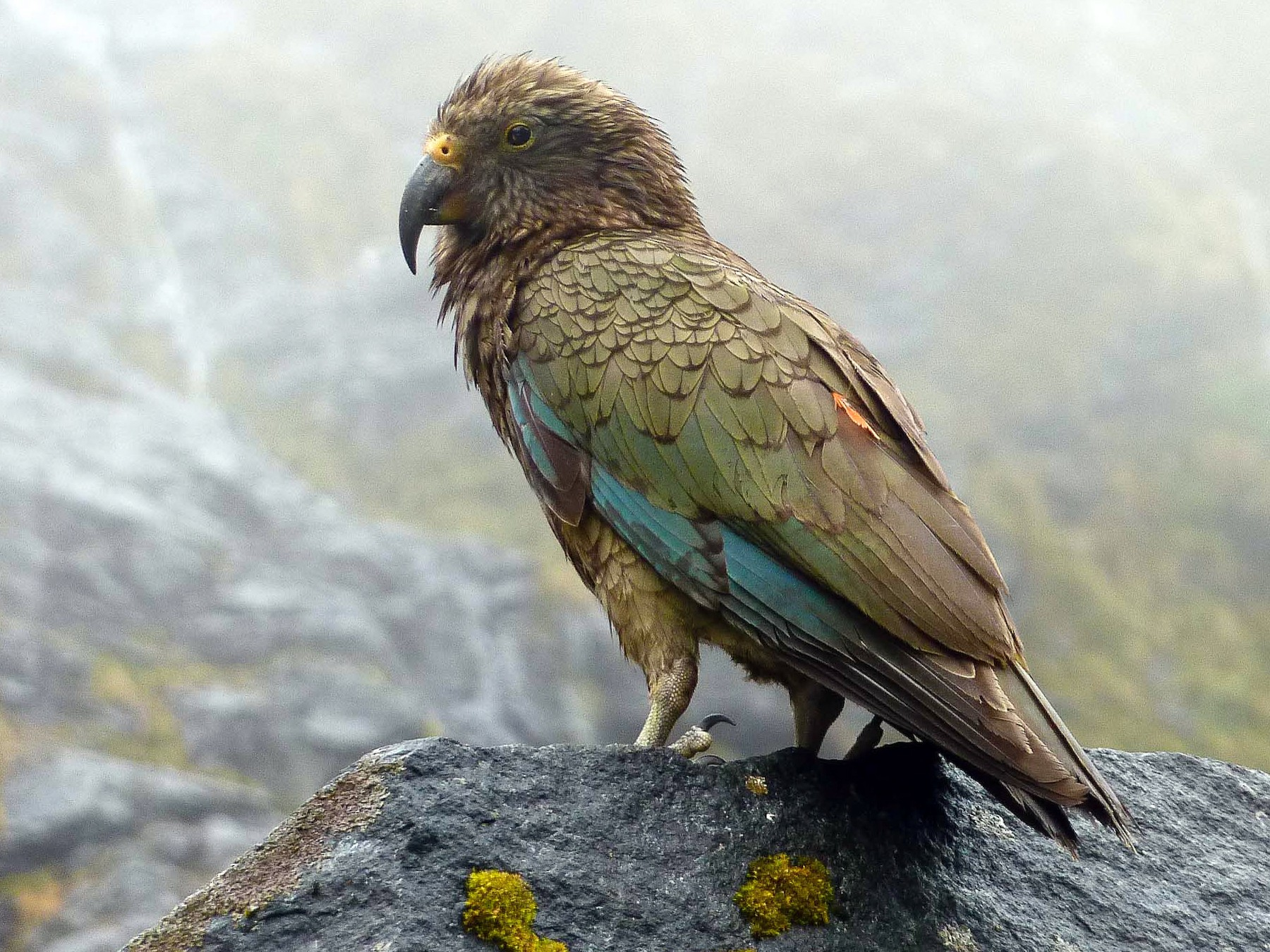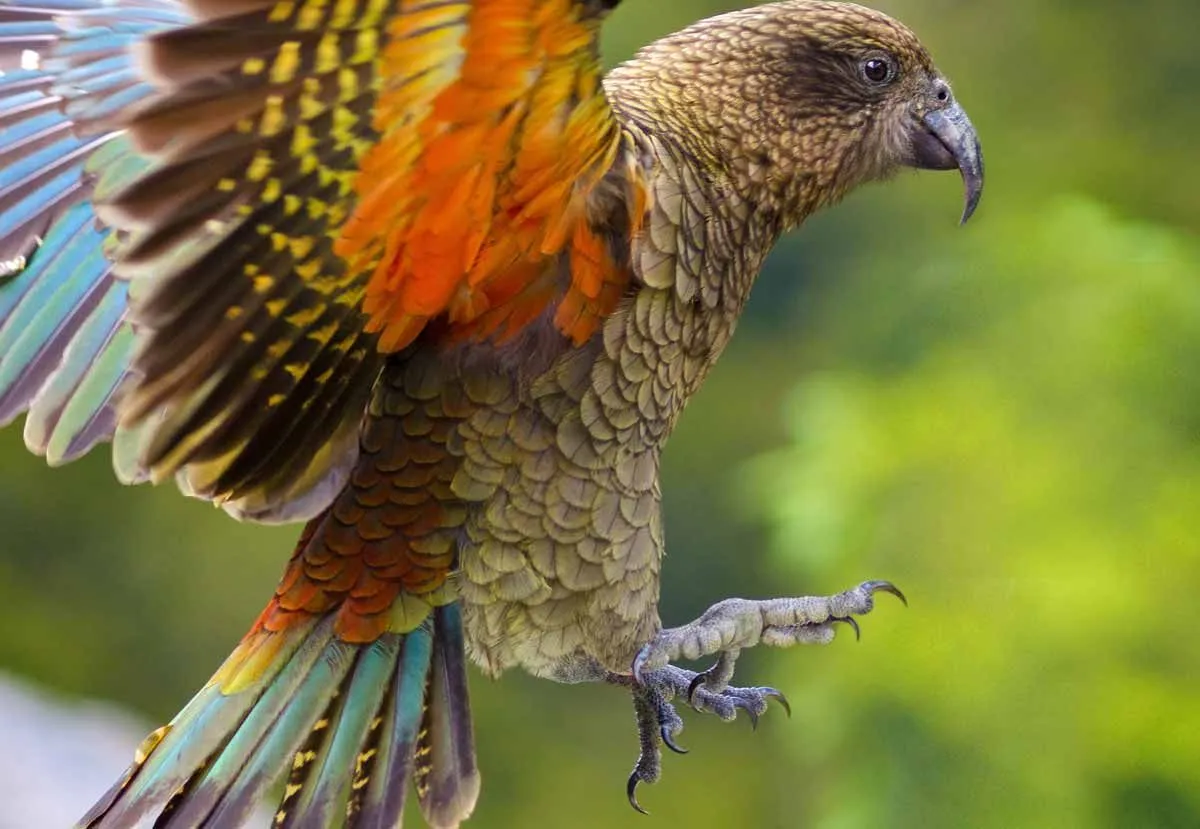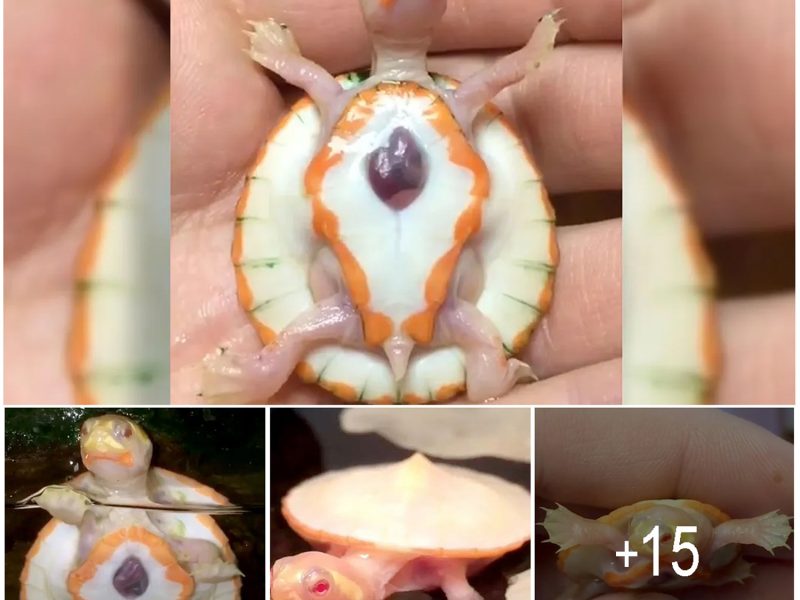The kea parrot (Nestor notabilis) or the New Zealand mountain parrot is one of the smartest species of parrots that are indigenous to New Zealand. The kea is the only alpine parrot that exists in the world. Keas are normally seen in the high mountains of New Zealand’s South Island and its alpine regions, which are the only place they can be found. Kea parrots play an important part in the tourism industry of New Zealand as many people come to the national park and conservation habitats to steal a glance at the kea and hopefully, get to play with them.
The plumage of the kea is olive green in color, with yellow/green nape and crown, with their chest and abdomen showing a brown tinge. Their lower back is orange to red in color which covers the underwing as well. The flight feather has a yellow tint to its undersides. The kea tail is bluish-green in color with a black tip. Due to their limited population, the kea is a protected species. Breeding of these alpine parrots is done in a controlled environment in order to keep their population on an upward trajectory. Keep reading for facts about the native New Zealand parrot.
Kea Parrot Fun Facts
What Do Kea Parrots Look Like?
The kea parrot is a large parrot from the Nestoridae family which is found mostly on the South Island of New Zealand.
The kea’s feathers are generally an olive-emerald hue with green edges with black and bright orange which are normally hidden on the underside of its wings. Their lower back is a shade of orange to red. Keas have a long, narrow, and curved beak that is gray-brown. Females can be easily distinguished from males due to their less sharp and shorter beaks.
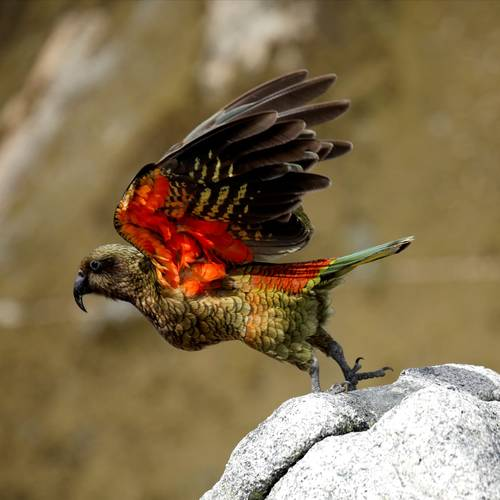
Keas are absolutely cute in all regards! They are social and curious and love to play around with humans. They are majestic to look at when they are in flight due to their vibrant wings in the full display which is appealing to a lot of people and only increases their cuteness factor.
Keas communicate through their body language and a variety of visual, auditory, tactile, and chemical stimuli. They make a high-pitched ‘kee-aah’ sound which is often seen as a flight call, the sound also being the origin of their names. They also fluff their head feathers, using them as facial expressions, and also communicate using various postures.
The kea parrot can grow up to 19.7 in (50 cm) and on average grow up to 18.9 in (48 cm) in length.
Unfortunately, there is no recorded speed of how fast a kea parrot can fly.
Keas are one of the larger species of parrots and can weigh from 1.8-2 lb (0.8-1 kg), which is heavy for parrots.
There are no specific names given to kea for males and females. In general, a male kea is called a cock, and a female is called a hen.
A baby or young kea parrot is called a chick. When the chicks are around one month old, the male assists in their feeding procedure alongside the female. Chicks stay in their nest for 10-13 weeks after which they will be ready to fly. Sadly, only less than 30% of kea chicks survive for more than a year.
Keas are omnivores by nature and consume a vast variety of food in the wild. Their natural diet consists of insects like grasshoppers, beetles, weta, and cicada nymphs. The vegetarian part of their diet comprises roots, leaves, flowers, soots, and seeds.
Keas are also known to eat other birds and mammals such as pigeons sheep meat, and possum carcasses. So when someone tells you they have seen a kea parrot eating sheep, then assume they are telling the truth!
These native birds of New Zealand are known to be extremely social and friendly birds. They try to amuse and entertain humans with their antics in the hope they will get food from them! Sadly this friendly behavior also causes them trouble as people see them as pests and try to harm them.
There has been no record of domestication of a kea. A parrot pet in the form of kea would not be good even if they were found in abundance as they are big in size and are probably in the top range of intelligent parrots.
Did You Know…
A gathering of kea is known as a circus! They are often considered klutz due to their awkward and curious behavior which in turn led them to become known as the clown of the mountains.
The flightless kakapo, another parrot indigenous to New Zealand and the surrounding island, is the closest relative of the kea.
The $10 note of New Zealand featured the kea on the reverse side between the years 1967 and 1992.
The kea makes a specific call that sounds like it is a kea parrot laughing. This call puts the others in a good mood, making the kea birds the first non-mammal that has shown contagious emotion, alongside humans and chimpanzees.
The beak of the female kea is smaller than the beak of the male, making it an easily distinguishable mark on their faces.
Their name comes from the sound ‘keeee-ah’ sound that they make.
Kea parrot intelligence is one of the most talked-about things when these intelligent birds are a part of the conversation.
Do Kea Parrots Attack Sheep?
Animal specialist J.R Jackson concluded in 1962 that the keas mistake injured sheep to be dead and hence attack or try to kill them for food. In 1992, video evidence of kea attacking healthy sheep was obtained, confirming the idea that keas use their powerful beaks and claws to attack and kill sheep. Though it does not kill the sheep directly, the injuries are the main cause of their death.
Is The Kea Parrot The Smartest Bird?
Kea parrot, if trained like other parrots, can talk. Keas have been documented using tools in an effort to get food and in creating a nest. They are intelligent creatures and have been trained to follow certain requests and demands in order to get treats. Keas are also curious and this curiosity leads them to steal items from houses and destroy things.
